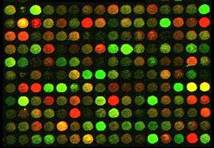In Vivo RNA Structure & Interactions
Return to Ongoing Research Topics One of the greatest challenges of modern-day biology is transferring the rich biochemical and structural knowledge from in vitro studies into the context of the cellular milieu. Nowhere is this more critical than for RNA molecules.
One of the greatest challenges of modern-day biology is transferring the rich biochemical and structural knowledge from in vitro studies into the context of the cellular milieu. Nowhere is this more critical than for RNA molecules.
Once regarded as a passive genetic transporter, RNA is now recognized as a critical regulator of essential biological processes. Sometimes forming functional structure and having an extraordinary tendency to fold into numerous stable structures, RNA is guided through its cellular odyssey by numerous RNA binding proteins. Further, recent work by our lab in collaboration with the Brown lab, and by others, has established that there is widespread control, regulation and organization brought about by RNA binding proteins associating with sets of mRNA that encode proteins with related functions and/or fates.
While this work reveals a previously unappreciated level of biological control, we lack mechanistic understanding on several levels. Most fundamentally, we do not know the rules that determine which proteins will interact with which RNAs. IN many cases a recognition structure or sequence is known. But not all RNAs with a particular recognition sequence are in fact bound. We are therefore searching for the additional levels of cellular specificity, probing the structural accessibility of sites, the localization of potential target RNAs and RNA binding proteins, and other possible determinants.
At an even more fundamental level, an understanding of gene regulation will require an understanding of the structure and dynamics of the component molecules. This need is certainly now recognized for DNA, for which chromatic structure and gene silencing are just beginning to be explored and understood. The analogous understanding of the structural and dynamic behavior of RNA in vivo is even more of a frontier, one that we are excited to begin to explore. Currently we are using an integrated approach consisting of microarray analysis, in vivo structural probing and cellular engineering to identify how RNA behaves in the cell and how this behavior impacts gene expression and control.
Some leading papers from the lab in the areas of in vivo RNA interactions are:
- Wang, Y., Liu, C.L., Storey, J.D., Tibshirani, R.J., Herschlag, D. and Brown, P.O. (2002) Proc. Natl. Acad. Sci. U.S.A. 99, 5860-5865. “Precision and Functional Specificity in mRNA Decay.” (Medline) (PDF File)
- Arava, Y., Wang, Y., Storey, J.D., Liu, C.L., Brown, P. and Herschlag, D. (2003) Proc. Natl. Acad. Sci. U.S.A. 100, 3889-3894. “Genome-wide Analysis of mRNA Translation Profiles in Saccharomyces cerevisiae.” (Medline) (PDF File)
- Gerber, A.P., Herschlag, D. and Brown, P.O. (2004) PLoS Biology 2, 342-354. “Extensive Association of Functionally and Cytotopically Related mRNAs with Puf-family RNA-binding Proteins in Yeast.” (Medline) (PDF File)
- Gerber, A.P., Luschnig, S., Krasnow, M.A., Brown, P.O. and Herschlag, D. (2006) Proc. Natl. Acad. Sci. U.S.A. 103, 4487-4492. "Genome-wide Identification of mRNAs Associated with the Translational Regulator PUMILIO in Drosophila melanogaster." (Medline) (PDF File)
- Hogan, D., Riordan, D., Gerber, A., Herschlag, D. and Brown, P. (2008) PloS Biology 6, 2297-2313. “Diverse RNA-Binding Proteins Interact with Functionally Related Sets of RNAs, Suggesting an Extensive Regulatory System.” (Medline) (PDF File)